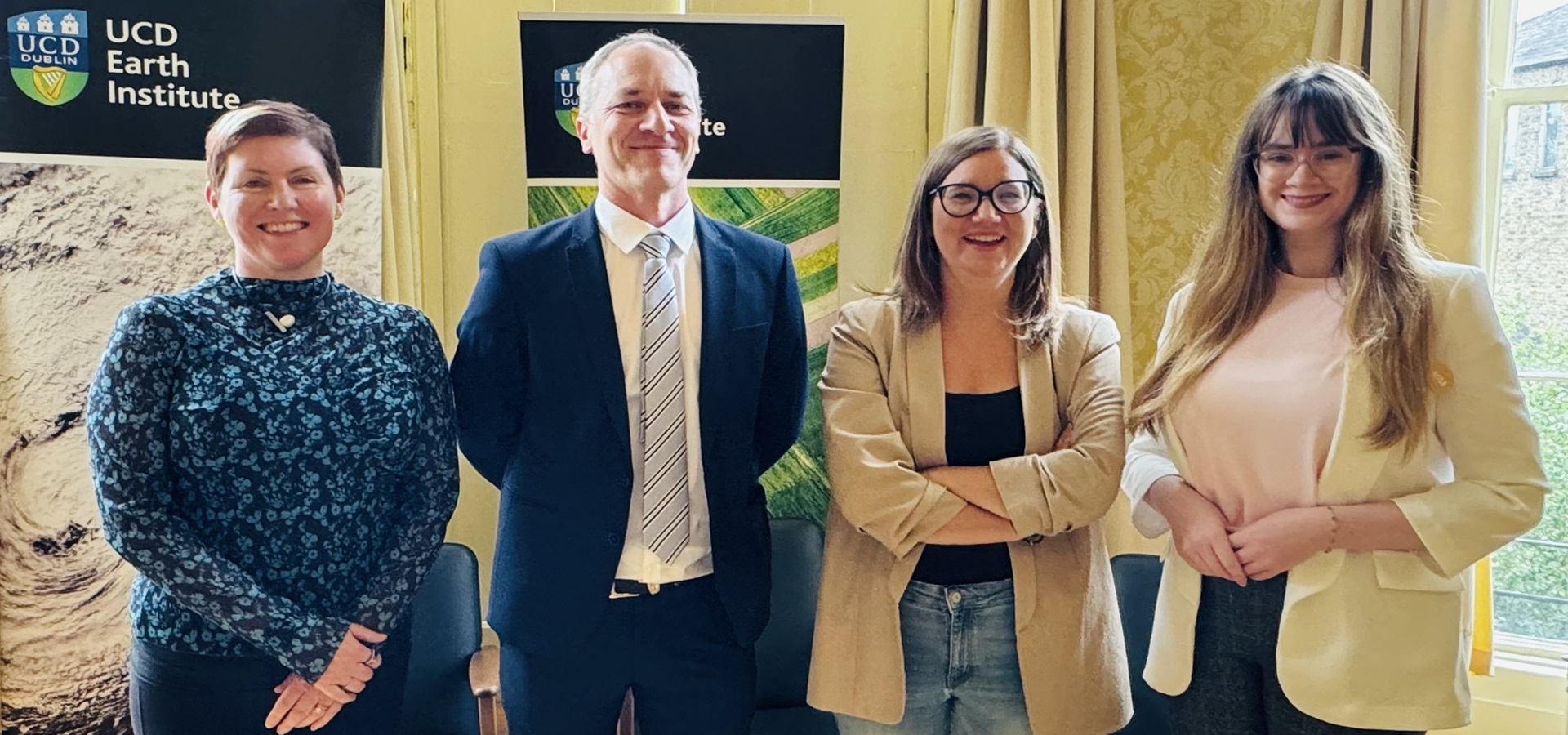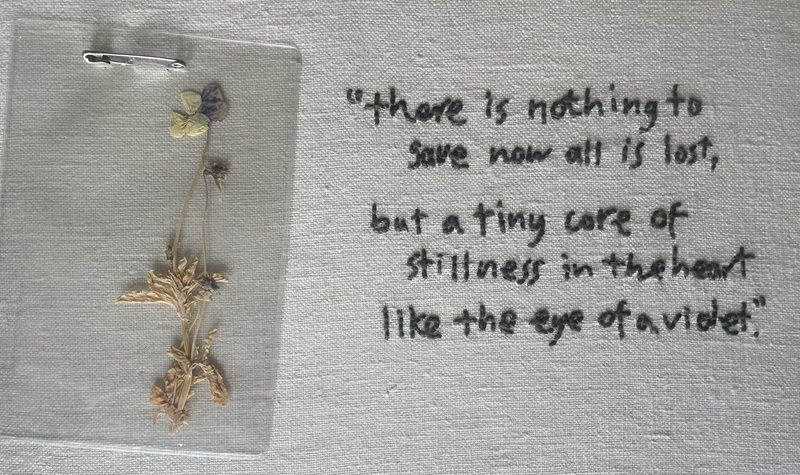Professor Aidan O'Sullivan is thethe Director of the UCD Centre for Experimental Archaeology and Material Culture (CEAMC), UCD's facility for experimental archaeology, teaching and research. Professor O'Sullivan, who's own work focuses on early medieval settlement and landscape, on social identity and materiality, and on interdisciplinary research combining historical sources, archaeology and palaeoecology, leads us through a fascinating virtual tour of this unique facility.
UCD Centre for Experimental Archaeology & Material Culture
.jpg)
What is Experimental Archaeology? We define it as "Making, Understanding, Storytelling", interrogating archaeological evidence from the past, in the present, through various practical, scientific and experiential approaches.
.jpg) | -315x242.jpg) |
|---|
UCD Centre for Experimental Archaeology & Material Culture is located at Roebuck on southern edge of UCD's Belfield Campus, and is one of UCD School of Archaeology's research, teaching and public outreach facilities.
-289x385.jpg) | -256x383.jpg) |
|---|
CEAMC supports a wide range of experimental archaeological research projects, funded by various sources like UCD Research Seed Funding, the Irish Research Council Marie Skłodowska-Curie COFUND fellowships and other sources.
-468x361.jpg) | -479x359.jpg) |
|---|
CEAMC is a virtually unique archaeological teaching facility, engaging undergraduate & graduate students in archaeological teaching & learning through all their senses, & giving them a better sense of material culture in the past.
.jpg)
CEAMC has a strong ethos of public engagement, highly visible, welcoming to both the local community, to school children & to visitors - including virtual - from across the world. Our UCD SPARC project connected with over 1,000 Dublin school children.
.jpg)
Amongst the many projects exploring past societies, CEAMC reconstructs prehistoric and medieval buildings to answer various architectural and archaeological questions. Some of the questions that we can ask revolve around technical or practical issues, that can be approached by recording specific types of data within reconstructions
.jpg) |
|---|
The Mesolithic house project led by Prof Graeme Warren with students sought to create a better understanding of Mesolithic hunter-gatherer buildings, with useful insights into labour, materials, scale and how we imagine the hunter-gatherer past of this island, and beyond
-279x240.jpg)
.jpg)
The early medieval house project explored how houses were built, thatched, used and experienced in early medieval Ireland, AD 400-1100. But, building a house in experimental archaeology is "good to think with", it provokes insights & enables us to ask questions we might have thought of before: What was it like in sensory, experiential terms inside a past building?
.jpg) | .jpg) |
|---|
This has been part of debate within experimental archaeology, and indeed archaeology, globally. Can we have both a knowledge-focused and experience-oriented understanding of the past? The CEAMC early medieval house reconstruction sought to understand an 8th century house from an archaeological dig at Deer Park Farms, Co. Antrim.
-303x404.jpg)
Practical issues of materials, technologies, time & labour can be thought about, but of course we are not experienced early medieval builders - but it certainly gets us to think about how people managed sustainable woodland and other resources
-509x339.jpg)
We can also think about the passage of time - not decades or centuries of course, but years, seasons, months and how buildings change across time.
-359x477.jpg) | -316x473.jpg) |
|---|
We can also experience what it *might* have been like to be inside an early medieval building, with its light and darkness, and how this might have influenced daily life, and action, and thus social spaces. Light and darkness would have been dynamic, changing according to day and night, weather conditions, and the use of fires, candles and rushlights. This enables to make a material reading of early Irish historical texts also - how were things organised within a building - how might light and darkness influence how a space is used?
.jpg)
The UCD early medieval house reconstruction led us back to a phrase in early Irish law, the need for a house to have a "fire always alit". These houses requires lots of work to keep warm - that's physical work...
.jpg) | .jpg) |
|---|
Interestingly, the early medieval house reconstruction was not that smoky, but we'd like to try that again using different thatch and insulation. Heat loss was rapid, so which would you prefer - a smokey house, or a cold house? Almost certainly the former?
.jpg)
Dr Eileen Reilly's research on living conditions as part of her Irish Research Postdoctoral Fellowship explored early medieval living conditions. Our UCD house had its own ecology, it was alive with beetles, spiders, birds in the thatch, even a pygmy shrew.
-649x487.jpg)
Unfortunately, like many early medieval houses in archaeology, it was destroyed in an arson attack in 2019. We are aware of the penalties for arson in early Irish law... but we will be rebuilding.
-277x208.jpg) | -150x201.jpg) | ].jpg) |
|---|
Experimental archaeology through making, understanding & storytelling, enables us to build a better understanding of people's lives in the past, both through scientific quantification, & through reflection on our own experiences..more to come! Our Undergraduate Archaeology and MSc in Experimental Archaeology & Material Culture students are encouraged to design their own research projects, questioning assumptions in archaeological literature - using "sole/soul authorship" to really find out things about the past
.jpg)
Over the last 5 years, our MSc in Experimental Archaeology and Material Culture students have done some really interesting projects. Maggie Kobik (USA) investigated some principles of Cretan Bronze Age pottery kiln use, by building a Minoan-style kiln at CEAMC
.jpg)
Caitlin Lobl (USA) made Roman ceramic lamps, explored their capacity to throw light, and investigated how they reacted to being places in different parts of a cremation pyre, to propose some ideas about funerary practice
-237x356.jpg) | -554x368.jpg) |
|---|
Sean O'Connor (USA) brazed some replica iron bells with bronze, to investigate aspects of the production of early medieval handbells, and identified features that can be seen in original bells in museum collections
.jpg)
Črtomir Lorenčič (Slovenia) investigated early medieval iron-working, including iron-smelting and blacksmithing, and challenged some ideas about the making of knives, axes and swords. You can read his thesis here.

